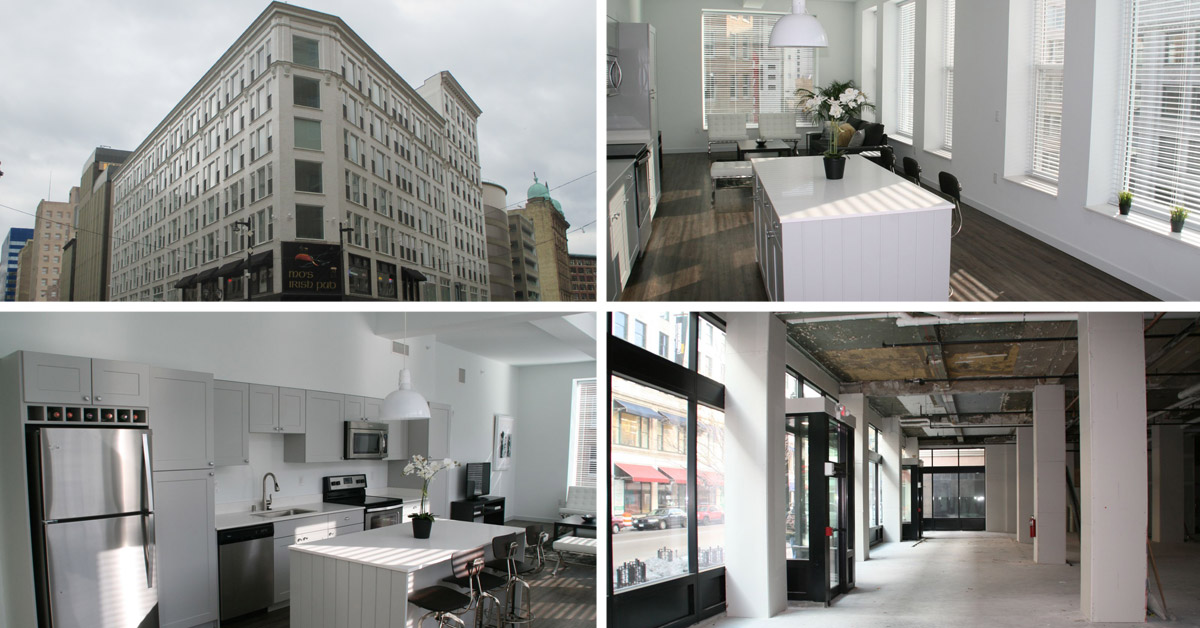Historic Preservation in Peril
Job-creating historic preservation tax credits face cuts again, this time from Congress.
Just a few years after the state and federal government were aligned in creating perhaps the best environment for historic preservation in history, the historic preservation tax credits critical to financing such deals again are threatened with elimination. As part of a massive overhaul of the federal tax code pushed for by President Donald Trump, federal historic preservation tax credits would be eliminated. The U.S. House of Representatives version of the tax bill, expected to be voted on as early as Thursday, would completely eliminate the credit, while the Senate version would reduce the 20 percent credit to 10 percent.
Developers can receive the federal income tax credits for 20 percent of any eligible project costs to redevelop any historically-designated properties. Since 2014, they have been able to pair the 20 percent federal credit with a matching 20 percent state credit. Developers then use the credits themselves or sell them for less than their stated value. The credits are a critical piece of financing projects that would otherwise be economically unfeasible compared to building new structures on empty sites.
Despite being sought for cuts by Republicans in both Washington D.C. and Wisconsin, the federal historic preservation tax credit program was created under Republican President Ronald Reagan in 1982. In 1984 Reagan said “Our historic tax credits have made the preservation of older buildings not only a matter of respect for beauty and history, but of course for economic good sense.” Wisconsin added a supplemental five percent credit in 1990, when Republican Tommy Thompson was governor, and increased it to a matching 20 percent credit in 2014. To the surprise of many, devoted Reagan-follower Gov. Scott Walker, who signed the 2014 hike, did a turnaround and drastically cut the credit in September in one of the 99 partial vetoes he made to the state budget.
State Historic Preservation Officer Jim Draeger, whose office at the Wisconsin Historic Society reviews every state credit request, walked the audience through historical usage of the credit in Wisconsin and its role as what he calls “an economic engine for the state.”
He noted that since 1982, $1.5 billion in federal tax credits have been issued to projects in Wisconsin resulting in job-creating investments of approximately $7.5 billion.
“Take the Pabst complex, Draeger said. “If the historic preservation tax credit hadn’t been available that complex would still be vacant today.” Draeger credits the tax credit, which has helped support the creation of a hotel, apartments and office space in the complex, with priming the pump for the new construction now underway on vacant lots in the complex.
The credits are also critical for rural Wisconsin. Discussing a long empty school in a rural area that got developed, Draeger said “you don’t get $2.5 million projects happening in these small towns.” Sixty percent of the credits go to communities with populations under 100,000.
Draeger reports that 16 percent of tax credit projects have gone to buildings that have been vacant for more than 20 years. Those buildings, he says, would be “unreachable” without the tax credit program and would be forced onto cities as an expense through abandonment, tax foreclosure and demolition. The program has turned liabilities into assets.
An extensive study on the credit’s usage was completed earlier this year by Baker Tilly. Among its many findings was that the repayment period on the credits for the state is four years. Credits issued since the increase in 2014 through 2016 will have returned an additional $187.77 million in tax revenue to the state after 10 years. Local property taxing entities win with the credits as well: the study shows they will gain $8.1 million in incremental property tax revenue in the 10 years following issuance of the 20 percent state credit.
Federal Action
Unlike with its recent cut in the Wisconsin state budget, the federal preservation tax credit isn’t being uniquely singled out. It’s one of a long list of credits proposed for elimination.
Developer Joe Alexander of the Alexander Company detailed the national lobbying efforts underway to preserve the credits, while encouraging those in attendance to contact Wisconsin’s Republican delegation to Washington D.C. “Every Democratic from the state of Wisconsin is in favor of this. Unfortunately that doesn’t matter much,” said Alexander.
The developer, whose firm has taken on large historic redevelopment projects across all of Wisconsin and much of the Midwest, encouraged those contacting Rep. Mike Gallagher (R-Green Bay) to thank him for his support of the credits to-date. According to Alexander, Gallagher is one of a handful of Republicans who have broken with leadership in support of the program.
There is an amendment that would restore the credit to 20 percent in the Senate, and calls in support of that should go to Sen. Ron Johnson.
Alexander notes he has been lobbying for months on the matter, anticipating the cut ever since Trump took office. In discussing the lobbying efforts, he said, “you stop realizing that a billion dollars is a lot of money.” The tax cut sought is around $5 trillion over 10 years, with the historic preservation tax credit program showing up in budget documents as a $1 billion annual cost. Alexander noted the relatively small cost compared to other projects makes it a little easier to push for its inclusion in a final deal.
Attendees were encouraged to call or email in support of the historic preservation program, referencing it as an economic development engine. Form letters were strongly discouraged.
Legislation Coming at State Level
There is hope for restoration of the tax credit program in Wisconsin following Walker’s devastating budget veto. Former assembly representative Joe Leibham, manager of government affairs for Foley & Lardner, has been lobbying on the matter on behalf of Alexander and others. He told those in attendance that legislation is expected to be introduced this spring by Sen. Alberta Darling (R-River Hills), Sen. Dan Feyen (R-Fond du Lac), Rep. Robert Brooks (R-Saukville) and Rep. Mike Rohrkaste (R-Neenah) that would remove or increase the $500,000 limit.
Leibham noted that the governor’s chief of staff, Rich Zipperer, has offered conceptual support for the proposal that would increase the limit to $3.5 million per project. A final agreement on the number is expected to come following a revenue estimate from the Legislative Fiscal Bureau in January.
Until new legislation is passed, Draeger is bracing for an incredible surge in applications. The new $500,000 cap doesn’t go into effect until July 1st. Applicants seeking to beat that deadline will need to submit their paperwork by February 15th.
Event Attendees
Those in attendance included developers Ann Pieper, Patti Keating Kahn and Kendall Breunig, the latter of which hosted the event in the formerly abandoned Pritzlaff complex into that he has redeveloped into offices, apartments and an event space with the use of historic preservation tax credits. A number of architects were in the room, including Mark Ernst of Engberg Anderson Architects, Adam Voltz of The Kubala Washatko Architects, Allyson Nemec of Quorum Architects, Keith Stachowiak of Workshop Architects and Vaishali Wagh of Continuum Architects + Planners. Preservation consultant Donna Weiss of Preserve, LLC was in active in discussions on the next steps to take, while preservation advocates Grace Fuhr of Historic Milwaukee and Dawn McCarthy of the Milwaukee Preservation Alliance looked on.
If you think stories like this are important, become a member of Urban Milwaukee and help support real independent journalism. Plus you get some cool added benefits, all detailed here.
Eyes on Milwaukee
-
Church, Cupid Partner On Affordable Housing
 Dec 4th, 2023 by Jeramey Jannene
Dec 4th, 2023 by Jeramey Jannene
-
Downtown Building Sells For Nearly Twice Its Assessed Value
 Nov 12th, 2023 by Jeramey Jannene
Nov 12th, 2023 by Jeramey Jannene
-
Immigration Office Moving To 310W Building
 Oct 25th, 2023 by Jeramey Jannene
Oct 25th, 2023 by Jeramey Jannene






















